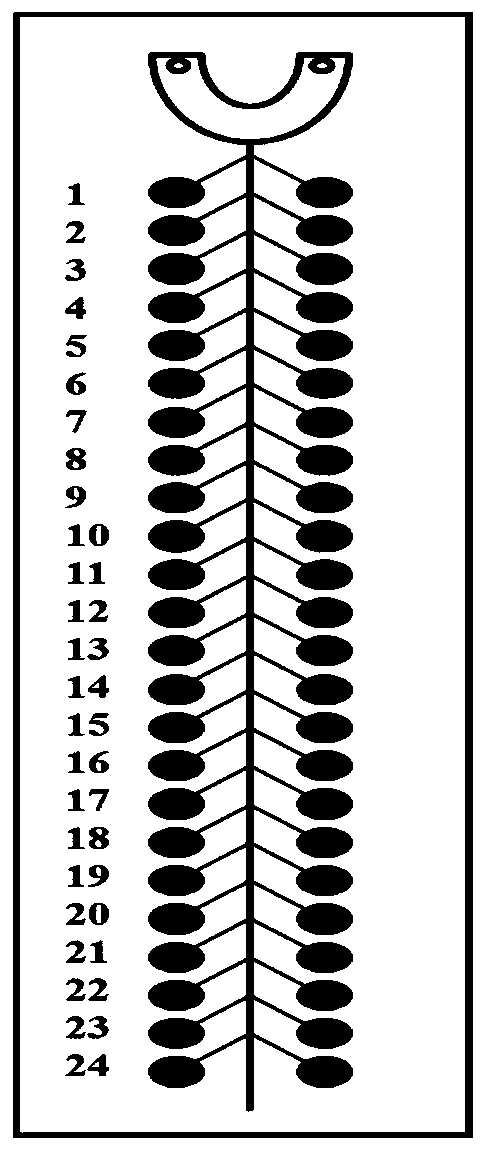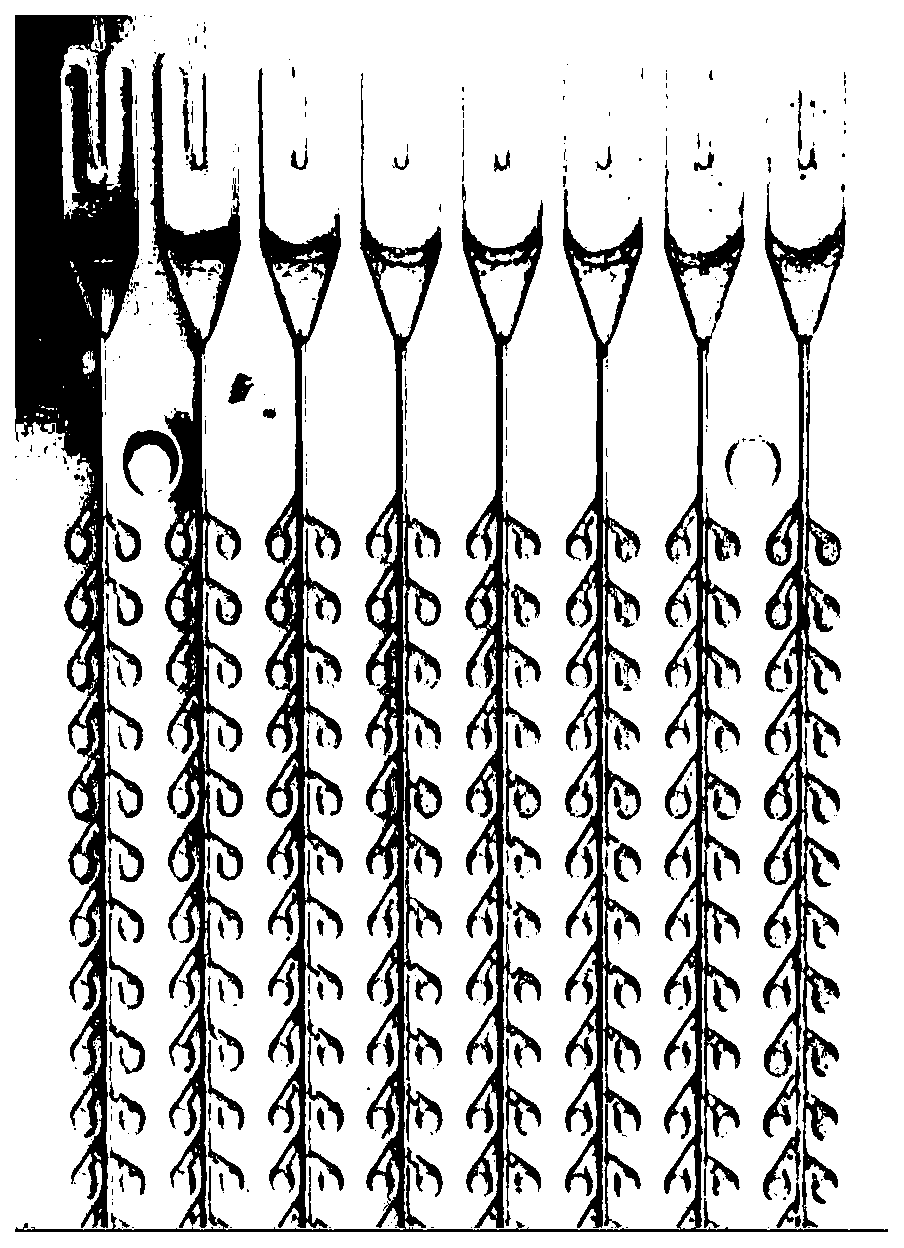Method for detecting 29 respiratory pathogens by using Taqman low-density microfluidic (TAC) chip technology
A microfluidic chip and respiratory technology, applied in the detection of 29 kinds of respiratory pathogens, can solve the problems of unfavorable simultaneous screening of multiple pathogen infections, long bacterial or cell culture cycle, and low sensitivity of ordinary gel electrophoresis
- Summary
- Abstract
- Description
- Claims
- Application Information
AI Technical Summary
Problems solved by technology
Method used
Image
Examples
Embodiment 1
[0089] Embodiment 1, for the primer probe design of 29 kinds of respiratory pathogen detection
[0090] The primer probes for the detection of 29 kinds of respiratory pathogens are shown in Table 1.
[0091] Table 1
[0092]
[0093]
[0094]
[0095] Note: merged base Y stands for C or T; merged base R stands for A or G; merged base S stands for G or C; merged base K stands for G or T. Note: F stands for upstream primer; R stands for downstream primer; P stands for MGB probe. The 5' end of the probe is labeled with the FAM fluorescent group, and the 3' end is labeled with the MGB group. In each set of primer-probe combination, the molar ratio of upstream primer, downstream primer and probe is 1:1:0.5.
[0096] The single-plex real-time quantitative PCR in the present invention uses RNP as an internal reference gene, and TAC detection uses RNP and IPCO as internal reference genes. The primers and probes used to detect IPCO were designed and synthesized by ABI Comp...
Embodiment 2
[0100] Embodiment 2, the preparation of positive plasmid standard
[0101] A positive plasmid standard for each pathogen was prepared for 29 pathogens.
[0102] Insert the target fragment into the cloning vector pEASY-Blunt zero (PEASY-Blunt zero Cloning Kit, full gold, lot number CB501) to obtain a positive plasmid standard (sequencing verification).
[0103] The target fragments corresponding to each pathogen are shown in Table 2.
[0104] Table 2
[0105] pathogen GenBank number of digits INF-A (Influenza A virus) MK995729.1 171-276 INF-B (Influenza B virus) MK999133.1 657-747 PIV-1 (parainfluenza virus type 1) MH684390.1 778-859 PIV-2 (parainfluenza virus type 2) MH892406.1 7463-7619 PIV-3 (parainfluenza virus type 3) KT765995.1 291-549 RSV-A (respiratory syncytial virus type A) MH760599.1 1083-1166 RSV-B (respiratory syncytial virus type B) MK749916.1 1275-1377 HMPV-A (human metapneumovirus type A...
Embodiment 3
[0106] Example 3, Preliminary Evaluation of Single-plex Real-time Quantitative PCR of Primer Probe
[0107] 1. Detection of clinical isolates
[0108]Strains to be tested: 29 pathogenic strains isolated clinically.
[0109] CB (Rickettsia, Coxiella burneti) is recorded in the literature: He Zemin, Sun Zhihui, Yu Yonghui et al. Cloning and identification of phase II mutant of Coxiella burneti strain Jiuli [J]. Biotechnology Communications, v.30 (2):170-174. Publicly available from the Academy of Military Medicine, Academy of Military Science, Chinese People's Liberation Army.
[0110] HEV (Enterovirus, Human Enterovirus) is recorded in the literature: Wo Ying. 2012-2014 Analysis of Epidemiological Characteristics of Respiratory Virus Infection in Children in Chongqing [D]. Academy of Military Medical Sciences of the Chinese People's Liberation Army, 2015. Obtained by the Institute of Medicine.
[0111] MV (Measles Virus, Measles Virus) is recorded in the literature: Zhu Xiao...
PUM
| Property | Measurement | Unit |
|---|---|---|
| Sensitivity | aaaaa | aaaaa |
| PCR efficiency | aaaaa | aaaaa |
Abstract
Description
Claims
Application Information
 Login to View More
Login to View More - Generate Ideas
- Intellectual Property
- Life Sciences
- Materials
- Tech Scout
- Unparalleled Data Quality
- Higher Quality Content
- 60% Fewer Hallucinations
Browse by: Latest US Patents, China's latest patents, Technical Efficacy Thesaurus, Application Domain, Technology Topic, Popular Technical Reports.
© 2025 PatSnap. All rights reserved.Legal|Privacy policy|Modern Slavery Act Transparency Statement|Sitemap|About US| Contact US: help@patsnap.com



